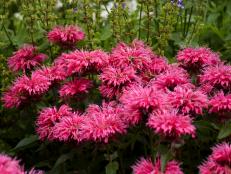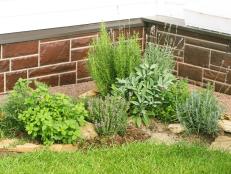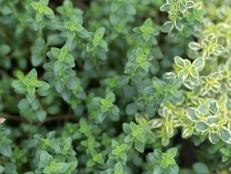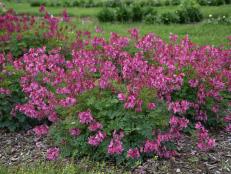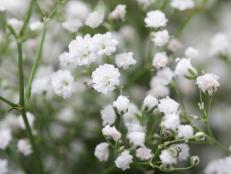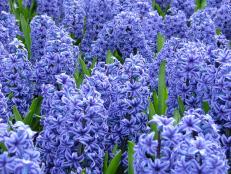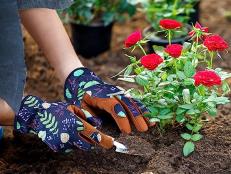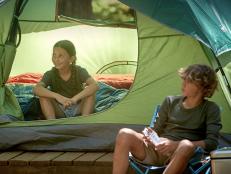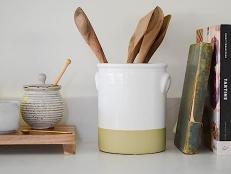How to Grow Carex Sedges
Learn the many ways this perennial sedge grass makes a great addition to your garden, including using Carex in containers, along borders and even as stunning focal point.

Courtesy of Mt. Cuba Center, https://mtcubacenter.org/
Low-growing Wood's sedge (Carex woodii) was a top performer in the four-year Carex plant trials at Mt. Cuba Center in Wilmington, Delaware, prized for its straw-colored flowers in spring.
Carex is a genus of perennial grass-like plants that are widely used in landscaping and gardening due to their versatility and attractive foliage.
In the garden, some Carex species are surprisingly adaptable to conditions outside of their typical wild preferences. Carex may be planted en masse to cover ground, stabilize soil and suppress weeds, and some species are so striking that they can be used as individual specimens and accents. In a typical cultivated landscape, Carex are low maintenance, requiring a late winter or early spring cutback, but many species thrive even without this level of care.
There are many different Carex cultivars available, each with its unique growth habit and coloration, making the plant a versatile and ornamental addition to any garden or landscape.
All About Carex Sedges
Carex is a large genus of plants in the family Cyperaceae, which includes more than 2,000 species worldwide. These plants are commonly called sedges and are found in a variety of habitats, from wetlands to forests and even deserts.
Sedges have been used for various purposes throughout history. For example, some species were used for weaving baskets, mats and other household items, while others were used for making rope, paper or even food. Carex have even been found as macrofossils, present in our North American soils thousands of years before European colonization.
In recent years, Carex have become increasingly popular as a landscape plant, valued for the attractive foliage and versatility in a variety of garden settings.
Botanical Name: Carex
Common Name: Sedge Grass
Hardiness Zones: 3 to 9, depending on species
Growing Conditions: Moist, well-draining soil
Light Requirements: Partial to full shade; some species can thrive in full sun
Special Features: Favorited for its foliage, which can be evergreen, bronze, copper-colored or variegated depending on species
The specific zone range that Carex plants thrive in can vary depending on the species or cultivar, as there are many different varieties of Carex available. However, many Carex species are adaptable from USDA Zones 3 to 9.
Some species, such as Carex muskingumensis, thrive in colder zones, while others, like the Carex cherokeensis, are more suited to warmer zones. Research the specific Carex variety you are considering planting to ensure it is well-suited to your zone and growing conditions. Additionally, some Carex are native to specific regions, so it is important to consider the native range of the plant when choosing a species or cultivar for your landscape.
The Prettiest Ornamental Grasses for Sun and Shade 10 Photos
Gorgeous ornamental grasses add movement, color and texture to gardens made in the shade or sun.
The Most Versatile Carex Varieties
There are many different species and cultivars of Carex plants available, each with its own unique characteristics and growing requirements. However, here are five of the most versatile Carex plants:
- Carex morrowii (Japanese sedge or Morrow's sedge) — This popular evergreen variety is well-suited to a wide range of growing conditions, from sun to shade, and moist to dry soils. It is also tolerant of salt spray, making it a great choice for coastal gardens.
- Carex buchananii (Leatherleaf Sedge) — This drought-tolerant Carex species is well-suited to dry, sunny locations. It has attractive copper-colored foliage that adds color and texture to the landscape.
- Carex oshimensis 'Evergold' (Japanese Sedge) — This versatile cultivar is well-suited to both sun and shade. It has variegated foliage that adds interest and color to the landscape.
- Carex comans 'Bronze' (New Zealand Hair Sedge) — This versatile cultivar is well-suited to both sun and shade. It has attractive bronze-colored foliage that adds color and texture to the landscape.
- Carex Testacea (Prairie Fire) — This low-maintenance Carex species is well-suited to a wide range of growing conditions, from full sun to part shade. It has attractive orange-brown foliage that adds color and interest to the landscape.
Planting and Growing Carex
Soil
Many Carex cultivars grow best in a moist, well-draining soil that is rich in organic matter. Choose a location that has good drainage but retains moisture.
Sunlight
Many Carex prefer partial to full shade, although some can tolerate and even thrive in full sun. Check the specific requirements of the Carex you are planting before choosing the planting location.
Watering
Carex needs consistent moisture, especially during the first growing season after planting; Carex benefits from consistent moisture. Water regularly, but be careful not to overwater, as this can lead to root rot. Once established, however, many Carex are drought-tolerant.
Mulch
Applying a layer of organic mulch around the base of the plant can help to retain moisture in the soil and suppress weed growth.
Fertilizer
Carex does not usually require fertilizer, but you can apply a slow-release, organic fertilizer in early spring to promote healthy growth.
Planting Depth
When planting Carex, make sure to plant it at the same depth as it was growing in its container. Gently press the soil around the roots to remove any air pockets.
Spacing
Space the plants according to their mature size, leaving enough room for them to spread and grow. Carex are well-suited for being planted densely, to create a living mulch and choke out weeds. Some spread more rapidly than others, such as Carex emoryi (Emory's sedge) but most generally stay put.
Maintenance
Carex are relatively low maintenance, but you can remove any dead or damaged foliage and divide the plants every few years to keep them healthy and prevent overcrowding.

Courtesy of Mt. Cuba Center, https://mtcubacenter.org/
Hardy, clumping Cherokee sedge shines through fall and into winter, when the dark green foliage really stands out. Clumping sedges need very little care but may need to be divided every few years.
Pests and Disease
Carex plants are generally resistant to pests and diseases, making them a great choice for low-maintenance landscaping. However, they may still be affected by some pests and diseases, such as:
Spider mites — These tiny insects can cause yellowing and browning of the foliage. You can control spider mites by spraying the plant with a stream of water to dislodge them or by using an insecticidal soap.
Mealybugs — Mealybugs are small, white, cotton-like insects that can suck the sap from the plant, causing it to wilt and weaken. You can control mealybugs by wiping them off with a cotton swab dipped in rubbing alcohol.
Rust — Carex can be susceptible to rust, a fungal disease that causes yellow or brown spots on the foliage. Remove any infected leaves and avoid overhead watering to prevent the spread of the disease.
Slugs and snails — These pests can cause damage to the foliage and roots of the plant. You can control them by handpicking or using a slug and snail bait.
Overall, Carex is a relatively hardy plant that is resistant to most pests and diseases, and any issues can usually be controlled through regular maintenance and monitoring.
How to Use Carex in the Landscape or Garden
Carex is a genus of perennial grass-like plants that are widely used in landscaping and gardening due to their versatility and attractive appearance. Here are six ways Carex can be used in the landscape or garden:
Lawn Replacement — Some Carex are excellent candidates for turfgrass lawn alternatives and many species can be maintained by mowing or leaving the plants unmowed for a more naturalistic aesthetic.
Ground Cover — Carex is an excellent choice for ground cover in shady areas, where many other plants struggle. Some species spread slowly by rhizomes, creating a beautiful carpet-like effect.
Border Plants — Carex can also be used as border plants along paths or garden beds. Its slender, arching foliage adds texture and interest to the landscape.
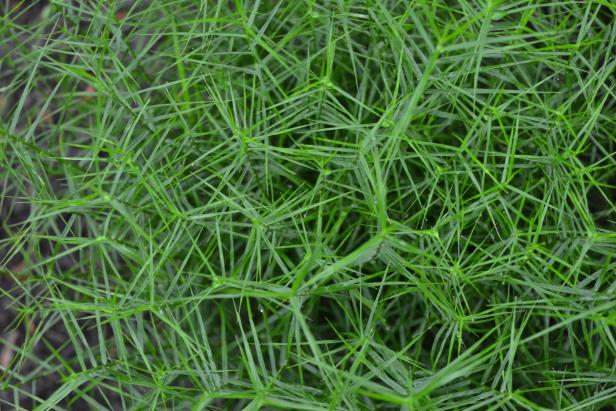
Courtesy of Mt. Cuba Center, https://mtcubacenter.org/
'Little Midge,' a diminutive native sedge (Carex muskingumensis), has beautiful, geometric foliage. It's a good choice for containers or the front row in a garden.
Containers — Carex can be planted in containers, either on its own or as part of a mixed planting. Its compact size makes it an excellent choice for smaller pots and hanging baskets.
Water Features — Some varieties of Carex, such as the Carex stricta (upright sedge) can be planted around ponds or water features. They thrive in moist conditions and add a beautiful contrast to the water and surrounding landscape.
Focal Points — Carex can also be used as a focal point in the garden, particularly the larger varieties such as the Carex crinita (fringed sedge). Plant them in clusters to create a stunning display of color and texture.
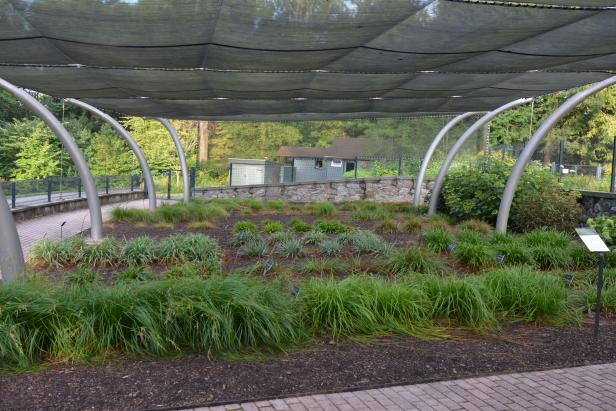
Courtesy of Mt. Cuba Center, https://mtcubacenter.org/
At Mt. Cuba Center, 70 species of Carex were tested for horticultural qualities and vigor over a four-year period.
Top 10 Carex Varieties Tested for Performance
Mt. Cuba Center, a native plant-focused botanic garden located near Wilmington, Delaware, conducted a four-year Carex trial to evaluate horticultural qualities, adaptability and vigor of 70 different native Carex species and cultivars.
The trial (find the full report here) was planted in fall 2017 and the plants received minimal care beyond supplemental watering in 2018 and only received a yearly late-winter cutback through the remainder of the evaluation. The plants were tested in both full sun and shade, and in soils that could be described as "average": medium-moisture clay loam with a pH of 6.5.
Sam Hoadley, Mt. Cuba’s manager of horticultural research, ranked the species and cultivars based on plant vigor and foliage quality in both sun and shade locations. Carex woodii, or Wood's sedge, was the top performer in the trial, demonstrating the genus's ornamental value and versatility in the garden. It excels in both sun and shade and offers a carpet of straw-colored flowers from April to May.
"Carex are quickly becoming favored by homeowners and horticulturists alike, thanks to their beauty, utility, and overall minimal maintenance requirements," explains Hoadley. "The diversity of the genus is outmatched only by the wide spectrum of habits in which they grow — from shady wetlands to coastal dunes, you can find a Carex to grow and thrive there."
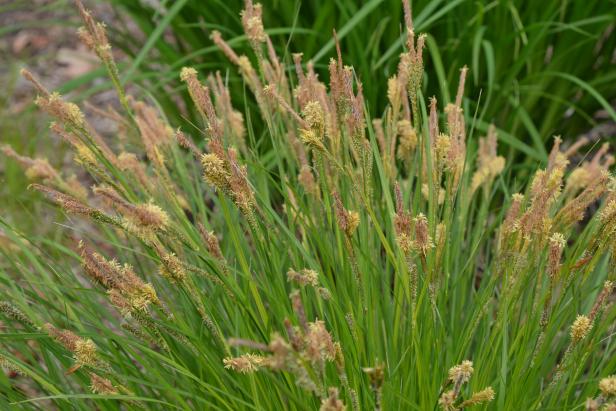
Courtesy of Mt. Cuba Center, https://mtcubacenter.org/
Drought-tolerant upright sedge (Carex stricta) is a native nesting habitat for the endangered bog turtle.
The top performers in the trial are as follows, ranked 1-10:
- Carex woodii (Wood’s sedge) — Wood's sedge possesses a low-growing slow-spreading habit with a dense mat of foliage. Its foliage was fine-textured and gave off an attractive blue-green hue in spring before changing to green as temperatures increased in late spring and summer. As a bonus, carpets of straw-colored flowers created an eye-catching display from April to early May.
- Carex cherokeensis (Cherokee sedge) — Cherokee sedge's dark-green foliage had a clumping habit and reached peak attractiveness from early summer to early winter which then provided cover for wildlife throughout the colder months. During the trial, voles got to the Cherokee sedges and caused extensive damage to the roots and crowns, but the damaged plants rarely succumbed and usually recovered well the next growing season.
- Carex bromoides (common brome sedge) — The common brome sedge had a clumping habit and featured fine-textured, flowing foliage. Clouds of small golden flowers were produced, adding to the ornamental value of this sedge. This species could be utilized to great effect in large masses as a weed-suppressing base layer of a mixed planting.
- Carex haydenii (Hayden’s sedge) — Hayden's sedge had silver spikes and elegant, sweeping inflorescences that made it one of the most striking and statuesque species in the trial. Hayden’s sedge grew taller and more upright than the other species then relaxed to a more mounded profile as the growing season progressed.
- Carex stricta (upright sedge) — The upright sedge had silvery fingers of new growth that emerged from the crown and eventually gave way to a beautiful display of flowers. The graceful deep-green foliage remains attractive all summer and is seemingly unaffected by short periods of drought. As a bonus, this species plays a critical ecological role in the Delaware wetlands as a nesting habitat for the endangered bog turtle.
- Carex emoryi (Emory’s sedge) — Emory's sedge is best suited for use in landscapes with ample space due to its rapid spreading habit, with the potential to expand more than six feet in a single growing season. Its blue-green foliage is the primary ornamental feature, as blooms were rarely observed in the evaluation.
- Carex sprengelii (long-beaked sedge) — The long-beaked has an upright fountain-shaped habit with nodding inflorescences. It is spectacular in April and May as the foliage emerges and the flowers and fruits are produced but heavy rain can cause the plant to flop. After several years, the clumps developed a hollow center, but timely division should keep the plants full.
- Carex pensylvanica (Pennsylvania sedge) — The Pennsylvania sedge performed beautifully in both sun and shade, forming a loose carpet of grassy foliage. A single division covered an area of 4-5 feet in diameter after four years, however, the flowers were not as showy or numerous as other species. The Pennsylvania sedge would be an exceptional option for weed suppression and ground covering.
- Carex pensylvanica 'Straw Hat' (Straw Hat Pennsylvania sedge) — The Straw Hat Pennsylvania sedge thrived in both shade and sun conditions with beautiful grassy foliage. While it was a slower-growing than the species, covering only 3-4 feet in diameter in four years, it produced a bounty of attractive parchment-colored flowers. This species could be a choice for helping to cover ground and suppress weeds.
- Carex muskingumensis 'Little Midge' (Little Midge Muskingum sedge) — The Little Midge Muskingum sedge was one of the most unusual plants in the entire trial. It was much smaller than the species Carex muskingumensis and another trialed cultivar, Carex muskingumensis ‘Oehme.’ Its foliage created a geometric pattern that resembled green honeycombs, making it a great candidate for container gardens or the front of a garden bed where its details can be appreciated up close.

%20Taniya%20Nayak,%20Ty%20Pennington,%20Alison%20Victoria,%20and%20Brian%20and%20Sarah%20Baeumler_BOTB_HGTV%20.jpg.rend.hgtvcom.196.196.suffix/1683310636672.jpeg)






